Solutions
Teams
Built for your whole team.
Industries
Trusted by all verticals.
Mediums
Measure any type of ad spend
Platform
Use Cases
Many Possibilities. One Platform.
AI and Automation
The Always-on Incrementality Platform
Teams
Built for your whole team.
Industries
Trusted by all verticals.
Mediums
Measure any type of ad spend
Use Cases
Many Possibilities. One Platform.
AI and Automation
The Always-on Incrementality Platform
All the methods you can use to check incrementality

More Advertising equals More Sales is an old myth that was maybe right in the dawn of paid Advertising, but is no longer accurate to say.
While more advertising could equal more sales, the number one most common reason for waste is paid advertising cannibalization.
Up to 80% of your ad spend could have no value for your sales. Even the advancements in conversion tracking, and performance marketing, did not resolve this.
Tracking technologies do what they are meant to do - they track. If a user saw an ad or even clicked it, and later converted - the media vendor generating said click would be credited. Even if that user would have converted, regardless of the click.
Paid media cannibalization often happens accidentally. Media vendors are incentivized to target users that will convert - and if a pocket of inventory happens to overlap with users who would convert organically - a media vendor is almost encouraged to target this pocket.
But there is a darker side to marketing measurement with attribution gaming (or attribution fraud). Media vendors learned that by manipulating the attribution, advertisers will give credit to their media, spending more budget with them.
Attribution fraud is like a random sales clerk placing a sticker on your item before you pay at the register, to get their commission. Maybe you would accept this as a retail customer, if it was not for the case that IS IT YOU WHO WILL BE PAYING THE COMMISSION.

Testing that you have an incrementality problem does not need to be rocket science.
We’ve gathered every method we could come up with allowing you to check out if you have an incrementality problem by yourself.
This method allows marketers who’s product marketing performance is influenced by the day of the week to test out the value of their marketing spend.
Instructions:
1. Plot your marketing performance data over a course of 30 days
2. Mark which are weekdays vs. weekends
If the data shows no visible correlation for volumes and costs between your organics and paid - you have no incrementality issues
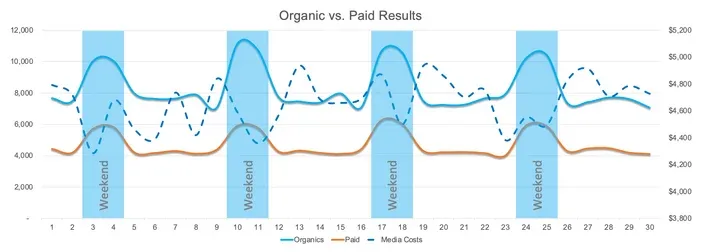
If the data shows a high correlation for volumes and costs between your organics and paid - your paid media is cannibalizing your organic results.
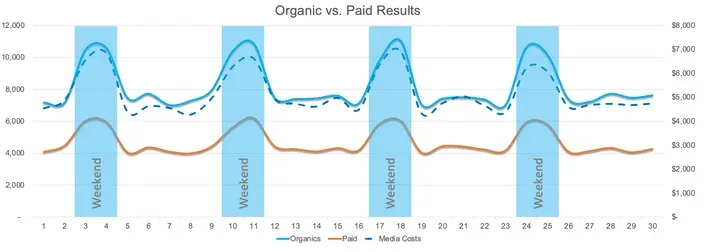
This method is useful for any marketer that uses monthly budgets with their ad vendors, as it depends on ad vendors “running out of budget” towards the end of the month.
Instructions:
1. Plot your marketing performance data over a period of a month (or several months)
2. Sum the total volume (Paid + Organics)
If the data shows no visible correlation towards end of the month as budgets run out, you have no incrementality issues
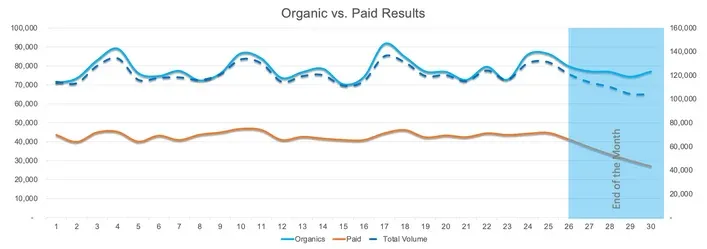
If the data shows that while paid media budgets run out, your total volume of conversions remains almost uninterrupted - your paid media is cannibalizing your organic results.
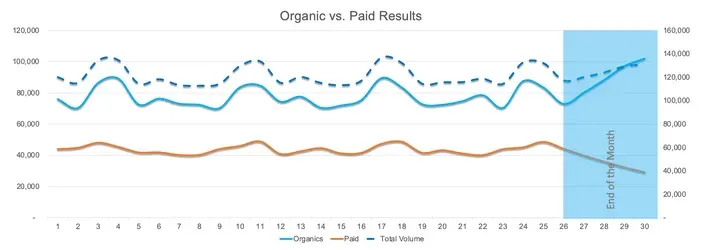
This method is useful for any marketer attempting to optimize their ad spend by calibrating prices / bids to improve performance.
Instructions:
1. Plot your paid media data to include volume and media costs around the period where bid/price was adjusted
If the data shows a correlation between volume and costs - especially around the time you adjusted the bid/price - you have no incrementality issue
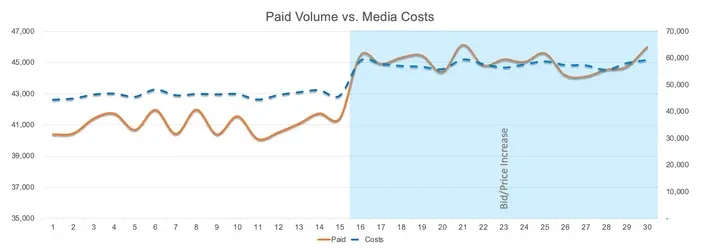
If the data shows that your media costs went up, but your volume remained the same - you have an incrementality issue. You are paying more to get the same.
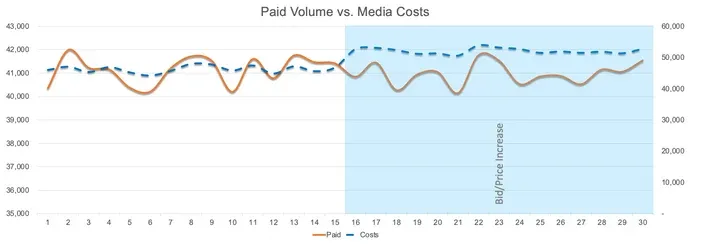
This method is useful for any marketer launching with a new media vendor. It requires basic addition and subtraction skills.
Instructions:
1. Plot your paid and organic marketing results, including a sum of both around the time period when you launched with a new media vendor
If the data shows that your total volume increase correlates with the volume attributed to the new ad vendor - you have no incrementality issue
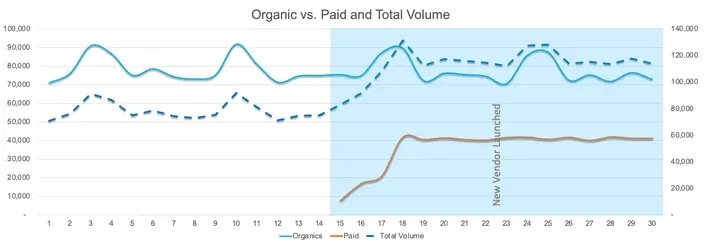
If the data shows that the total volume is barely impacted, while the organic volume goes down - the new ad vendor is not adding any incremental results.
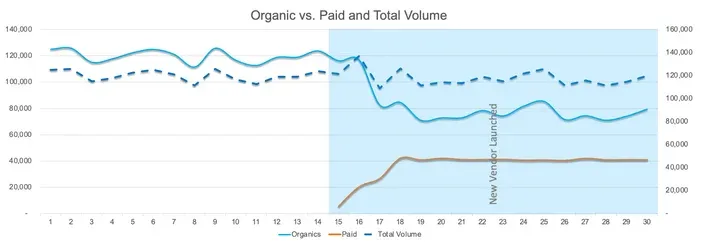
This method is useful for any marketer who’s app is mentioned by a random celebrity or an external factor that will influence their marketing activities dramatically.
Instructions:
1. Get Elon Musk to tweet your app name.
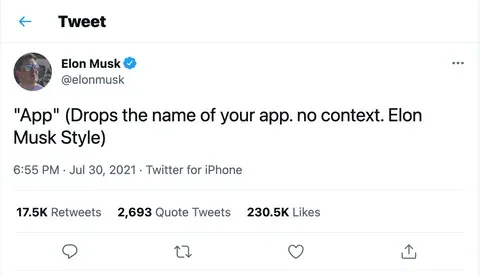
2. Plot the data showing organics, paid, and a total volume for the period before and after the tweet.
If results show that organics went up, but your paid results (and costs) remained unchanged - you harvested all that incrementality to your own marketing results. Great job!
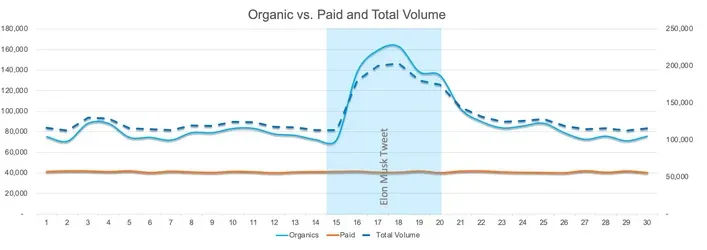
If results show that paid increased with organics - you missed out on the opportunity to leverage the tweet to your own results.
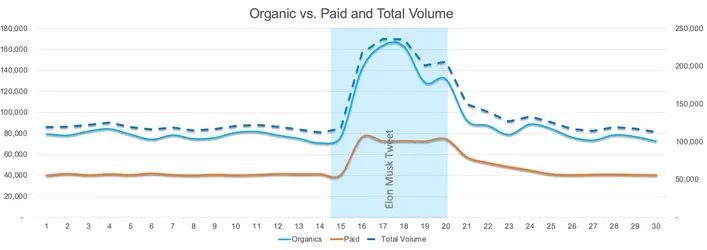
If any of these methods showed you that you have an incrementality problem, worry not. Whatever results you saw will likely produce different answers if you perform the same checks again in a week.
Incrementality and marketing performance are relative terms. A channel producing incremental results may be cannibalizing your organic customers during a different period of time.
Marketing results are influenced by competition, your media mix, external seasonality factors and so on. There is no “ground truth” to compare to, as there’s no even ground.
Experimenting with incrementality is fine, but to measure incrementality in near real time, you need to harness technology.
Measuring the causality of your marketing results requires the development of an advanced algorithmic approach that can learn the true incremental value of your marketing spend, providing you with insights that you can use in your own marketing activities.
INCRMNTAL is a continuous incrementality measurement platform. You don’t need to run any experiments for our platform to provide you with incrementality or cannibalization insights. Measurements take seconds.
If you want to learn more, visit INCRMNTAL or book a demo today!

Maor is the CEO & Co-Founder at INCRMNTAL. With over 20 years of experience in the adtech and marketing technology space, Maor is well known as a thought leader in the areas of marketing measurement. Previously acting as Managing Director International at inneractive (acquired by Fyber), and as CEO at Applift (acquired by MGI/Verve Group)